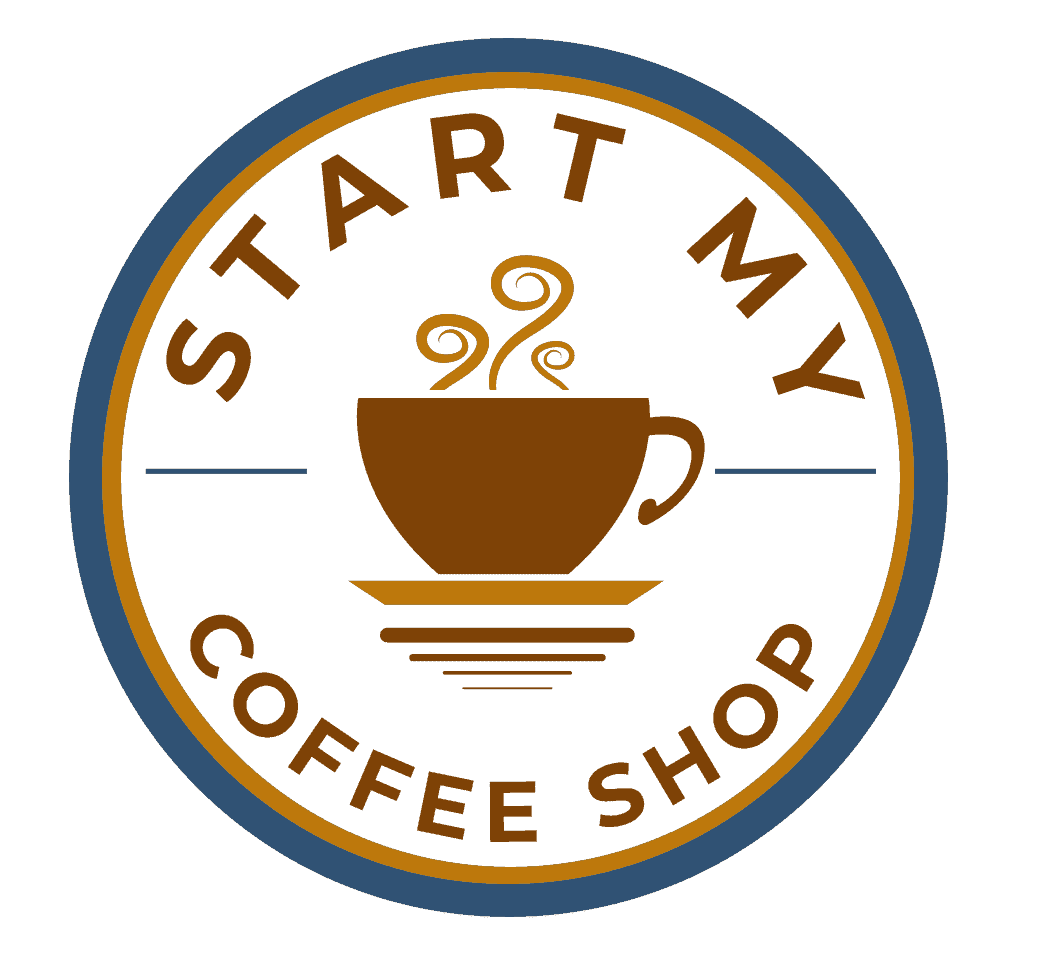The aroma of freshly brewed coffee, the cozy ambiance, and the buzzing conversations make coffee shops a popular destination for many. If you have a passion for coffee and a dream of running your coffee shop, you must consider having a solid business plan first.
A coffee shop business plan is the blueprint for turning your Java dreams into reality. It outlines your unique concept, target market, strategies, and financial projections. With a well-crafted plan, you’ll attract investors and create a caffeinated haven where customers can savor the perfect brew.
In this article, I will guide you through the essential elements of a coffee shop business plan, helping you lay a strong foundation for your future venture.
Executive Summary
The executive summary plays a crucial role in capturing the essence of your coffee shop business plan. It serves as a condensed yet impactful introduction that entices readers to delve deeper into your proposal. Within this concise summary, it is essential to showcase the distinct and compelling aspects of your concept. Highlight what sets your coffee shop apart from others, whether it’s your specialty coffee blends, innovative brewing techniques, or a unique atmosphere that creates a memorable experience for customers.
Furthermore, the executive summary should provide a snapshot of your target market. Describe the demographics, preferences, and behaviors of your ideal customers. This demonstrates that you have a solid understanding of your target audience and have tailored your strategies to effectively meet their needs.
Summarize the key strategies that will drive your greatness. Outline your marketing and promotional tactics, customer acquisition strategies, and methods for building customer loyalty. By showcasing a clear roadmap to achieve your business goals, you inspire confidence in potential investors and partners.
Provide a concise overview of your financial projections and funding requirements. Summarize your expected revenue, expenses, and profitability based on thorough market research and analysis. Clearly state the amount of funding you require to launch and sustain your coffee shop until it becomes stable.
Read more about: Coffee House Business Planning: Key Factors to Consider
Company Description

In the section dedicated to describing your coffee shop, you have the opportunity to paint a vivid picture of your vision, mission, and values. Start by articulating your overarching goal and what you aim to achieve with your coffee shop. Is it to provide a cozy haven where people can unwind and enjoy their favorite brew? Or perhaps it’s to promote sustainability and ethical sourcing within the coffee industry. Whatever it may be, clearly communicate your purpose and the core values that will guide your operations.
Delve into the specifics of your coffee offerings, showcasing your passion for the perfect cup. Describe the types of beans you will source, whether it’s single-origin, blends, or rare and unique varieties. Highlight the brewing methods you will employ, such as pour-over, espresso-based, or cold brew, and how they enhance the flavor profiles. Don’t forget to mention any signature or specialty drinks that will set your coffee shop apart and leave a lasting impression on customers.
To differentiate your coffee shop from competitors, emphasize the unique aspects that will make it a standout destination. This could include a beautifully designed space, a focus on sustainability, a commitment to supporting local farmers, or even a curated selection of pastries or snacks that complement your coffee offerings. Explain how these elements will contribute to creating a memorable and exceptional customer experience.
Market Analysis
Conducting comprehensive market research is vital in developing an effective coffee shop business plan. Start by delving into the coffee industry to gain a deep understanding of the current trends, preferences, and potential challenges. Stay updated on emerging coffee flavors, brewing techniques, and customer demands. This research will enable you to stay ahead of the curve and offer innovative offerings that resonate with your target market.
Speaking of which, it is crucial to identify your target customers by analyzing their demographics and psychographics. Determine their age groups, income levels, lifestyles, and coffee consumption habits. This information will help you tailor your offerings and marketing strategies to cater to their specific needs and preferences.
Simultaneously, analyze the competitive landscape to assess existing coffee shops in your area. Identify their strengths and weaknesses, such as their menu variety, customer service, ambiance, or unique selling propositions. This analysis will provide valuable insights on how to differentiate your coffee shop and carve out a niche in the market.
Organization and Management
In your business plan, it’s crucial to outline the organizational structure of your coffee shop and to specify the duties and tasks of the essential team members. Detail the owner’s participation in daily operations, decision-making, and the overall strategic direction of the company. Highlight their relevant background and business management or industry knowledge.
Next, outline the responsibilities of managers who will oversee various aspects of the coffee shop, such as operations, marketing, and customer service. Highlight their qualifications, highlighting their experience in managing teams and their understanding of the coffee industry.
Discuss your staffing requirements, considering factors like peak hours, anticipated foot traffic, and seasonal fluctuations. Mention any training programs you plan to implement to ensure consistency and high-quality service. This could include coffee education, customer service training, and ongoing professional development to keep the team up to date with industry trends.
Read more about: Coffee House Business Plan: A Buzzworthy Venture
Product Line and Menu
In detailing the range of products and services your coffee shop will offer, it is important to present a comprehensive menu that showcases the variety of coffee beverages, snacks, pastries, and other complementary items you plan to provide.
Start by highlighting the different coffee options available, such as espresso-based drinks, pour-over brews, cold brews, and flavored concoctions. Describe the flavor profiles, aromas, and unique characteristics of each coffee offering, enticing customers with a diverse range of choices.
Additionally, emphasize the selection of snacks and pastries that will complement the coffee experience. Whether it’s freshly baked croissants, muffins, sandwiches, or healthy snack options, clearly articulate the quality and deliciousness of these items.
Marketing and Sales Strategy
Begin by identifying your target audience, and understanding their preferences, demographics, and behaviors. This knowledge will help you tailor your marketing efforts effectively. Outline the promotional channels you will utilize to reach your target audience.
This could include social media platforms like Instagram and Facebook, where you can showcase enticing visuals of your coffee offerings and engage with customers. Consider local advertising options such as print media, radio, or community events to generate awareness within your neighborhood. Additionally, explore partnerships with complementary businesses, such as local bakeries or fitness studios, to cross-promote and tap into their customer base.
Establishing a pricing strategy that reflects the value of your products and aligns with the local market is essential. Conduct market research to understand pricing trends and ensure that your prices are competitive yet profitable. Highlight the quality of your coffee, the expertise of your baristas, and the overall experience your coffee shop provides to justify your pricing structure.
Incorporate customer retention strategies into your marketing and sales plan as well. This can include loyalty programs, personalized offers, or special events that create a sense of community and keep customers coming back for more.
Operations and Infrastructure
When describing the physical space and layout of your coffee shop, provide a detailed overview that highlights the key elements contributing to an inviting atmosphere. Discuss the equipment, fixtures, and furnishings you will need to create a comfortable and aesthetically pleasing environment. This may include espresso machines, grinders, brewing equipment, seating options, lighting, and decor that align with your brand identity and customer preferences.
Outline your supply chain management to ensure the seamless flow of essential ingredients and products. Specify your coffee bean suppliers, emphasizing their quality, sustainability, and ethical sourcing practices. Mention any food vendors you will partner with to provide fresh pastries, snacks, or other menu items. Detail your inventory management procedures to ensure optimal stock levels and minimize wastage.
Develop a staffing plan and operational procedures to ensure efficient and smooth operations. Determine the number of baristas, support staff, and managers required to adequately handle customer demand.
Describe the training programs you will implement to ensure consistency in coffee preparation, customer service, and hygiene practices. Outline standard operating procedures for opening and closing, cash handling, and maintaining cleanliness and organization within the coffee shop.
Read more about: Coffee House Business Plan: Key Elements To Know
Financial Projections

Presenting a detailed financial plan for your coffee shop is essential to demonstrate the viability and profitability of your business. Begin by including a sales forecast that projects revenue based on expected customer traffic and average transaction values. This will provide a realistic estimation of your potential earnings.
Outline your startup costs, which encompass various elements such as equipment, permits, licenses, initial inventory, marketing expenses, and any renovations or leasehold improvements needed for the physical space. Be thorough in identifying all the necessary expenditures to ensure accurate financial planning.
Discuss your funding requirements and potential sources of financing. Specify the amount of capital you need to launch and sustain your coffee shop until it becomes stable. This may include personal investment, loans from financial institutions, or potential partnerships with investors. Highlight the potential return on investment and provide a clear repayment plan for loans or investment agreements.
Risk Assessment and Mitigation
Identifying the potential risks and challenges that your coffee shop may encounter is crucial for proactive risk management. Begin by considering legal and regulatory requirements that pertain to the food and beverage industry, such as permits, licenses, and health inspections. Familiarize yourself with local laws to ensure compliance and mitigate any legal risks.
Health and safety concerns are also paramount. Develop stringent hygiene protocols, including regular cleaning schedules, proper food handling procedures, and staff training on health and safety practices. This will help safeguard the well-being of your customers and employees and protect your business from potential health-related issues.
Implementing effective security measures is vital for protecting your coffee shop and ensuring the safety of customers and staff. This may involve installing security cameras, alarm systems, and secure cash handling procedures. Train your employees on emergency response protocols to handle potential security incidents.
Maintaining a contingency fund is also advisable. Set aside a portion of your budget for unexpected expenses or unforeseen events like equipment breakdowns, renovations, or unexpected dips in revenue. This will provide a financial buffer and help you navigate through challenging times without jeopardizing the stability of your coffee shop.
Summary
Crafting a coffee shop business plan is a crucial step in bringing your passion for coffee to life. By considering the various aspects discussed in this article, you can create a solid roadmap for a great coffee shop business of yours. A well-prepared business plan not only attracts potential investors but also serves as a guiding document to navigate the challenges of the coffee industry. You can turn your coffee shop dream into a thriving reality with determination and perseverance.
So, grab your favorite mug, fill it with inspiration, and get ready to brew your dream coffee shop into a resounding achievement. Cheers to your journey as a coffee shop entrepreneur!
Frequently Asked Questions
Q: What are the key factors to consider when selecting a location for my coffee shop?
A: When choosing a location for your coffee shop, consider factors such as foot traffic, proximity to residential and business areas, parking availability, competition, and visibility.
Q: How much does it cost to start a coffee shop?
A: The cost of starting a coffee shop can start from $80,000 to $250,000. It varies depending on various factors, including the size of the space, equipment, and furniture needed, renovation or leasehold improvements, initial inventory, permits and licenses, marketing expenses, and staffing.
Q: What are the staffing requirements for a coffee shop?
A: Typically, you will need baristas to prepare and serve coffee, cashiers to handle transactions, and support staff for cleaning and maintenance. It’s crucial to determine the optimal staffing levels based on expected customer traffic and operational needs.
To learn more on how to start your own coffee shop, check out my startup documents here.
Disclaimer: The information provided by StartMyCoffeeShop.com (“The Site”) is for general informational purposes only. All information on the Site is provided in good faith. However, we make no representation or warranty of any kind, express or implied, regarding the accuracy, adequacy, validity, reliability, availability, or completeness of any information on the Site. Under no circumstance shall we have any liability to you for any loss or damage of any kind incurred as a result of the use of the Site or Reliance on any information provided on the Site. Your use of the Site and reliance on any information on the Site is solely at your own risk. This blog post is for educational purposes only and does not constitute legal advice. Please consult a legal expert to address your specific needs. Terms and Conditions. (https://startmycoffeeshop.com/terms-and-conditions/)

Hi! I’m Shawn Chun
My adventure in coffee began when I first launched my first coffee shop back in the early 2000s. I had to figure out so many things on my own and to make it worse within 2 years of opening two large corporate coffee chains moved in just blocks away from me!
As I saw smaller and even some larger coffee shops in the neighborhood slowly lose customers to these giant coffee chains and slowly close up shop, I knew that I had to start getting creative…or go out of business.
I (like you may be) knew the coffee industry well. I could make the best latte art around and the foam on my caps was the fluffiest you have ever seen. I even had the best state-of-the-art 2 group digital Nuova Simonelli machine money could buy. But I knew that these things alone would not be enough to lure customers away from the name brand established coffee shops.
Eventually, through lots of trial and error as well as perseverance and creativity I did find a way to not only survive but also thrive in the coffee/espresso industry even while those corporate coffee chains stayed put. During those years I learned to adapt and always faced new challenges. It was not always easy, however, in the end, I was the sole survivor independent coffee shop within a 10-mile radius of my location. Just two corporate coffee chains and I were left after that year. All told the corporate coffee chains took down over 15 small independent coffee shops and kiosks and I was the last one standing and thriving.
Along the years I meet others with the same passion for coffee and I quickly learned that it is not only “how good a barista is” that makes a coffee shop successful, but the business side of coffee as well.
Hence why I started this website you are on now. To provide the tools and resources for up and coming coffee shop owners to gain that vital insight and knowledge on how to start a coffee shop successfully.
Stick around, browse through my helpful blog and resources and enjoy your stay! With lots of LATTE LOVE!
Shawn






